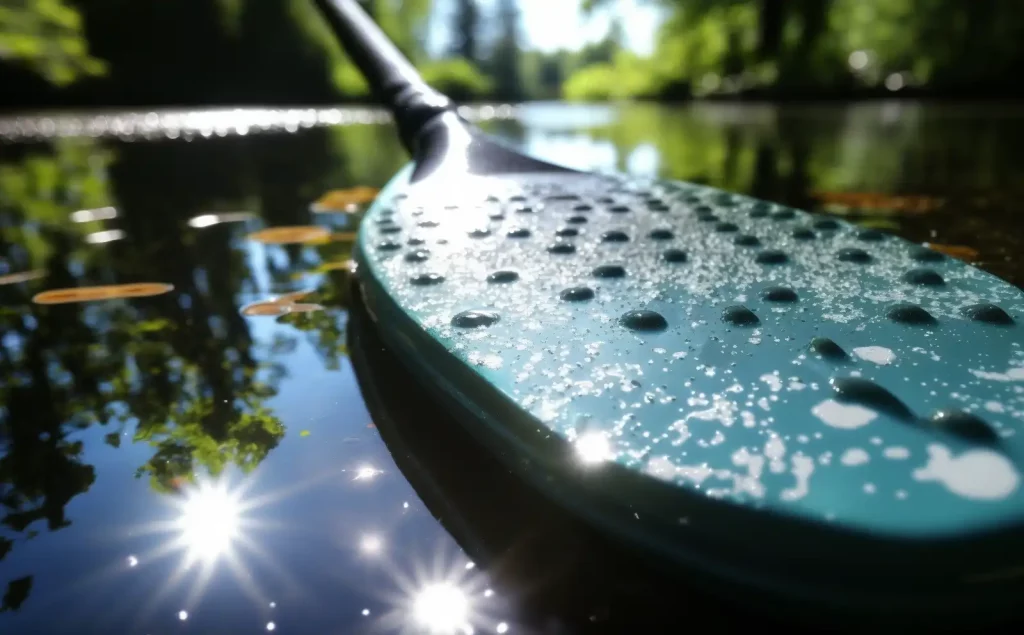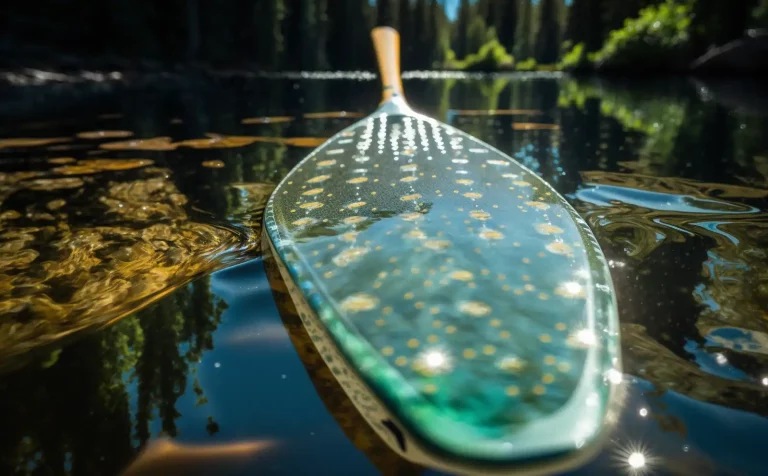Kayaking is a fun and exciting way to explore nature and get some exercise. But to have the best experience, you need the right gear, including a quality kayak paddle. With so many different types and styles available, it can be challenging to know which one to choose, especially if you’re planning a camping trip. In this article, we’ll provide a comprehensive guide on how to choose the right kayak paddle for camping.
Key Factors to Choose the Right Kayak Paddle for Camping
Understanding the Anatomy of a Kayak Paddle
Before diving into the different factors to consider when choosing a kayak paddle for camping, it’s essential to understand the basic anatomy of a kayak paddle. The paddle consists of three primary parts: the blade, the shaft, and the grip. The blade is the wide, flat part of the paddle that goes in the water, while the shaft is the long, straight part that you hold onto. The grip is the part of the paddle that you hold onto with your hands.

Choosing the Right Material
The material of your kayak paddle can significantly affect your experience while kayaking. Generally, the three most common materials for kayak paddles are aluminum, fiberglass, and carbon fiber. Aluminum paddles are the least expensive but also the heaviest. Fiberglass is lighter than aluminum, but not as lightweight as carbon fiber. Carbon fiber is the lightest and most expensive material but also the most durable.
Selecting the Correct Length
The length of your kayak paddle is a crucial factor to consider, as it can significantly impact your performance on the water. The length of your paddle should depend on your height, the width of your kayak, and your paddling style. A general rule of thumb is that your paddle should be 210cm to 240cm in length. However, taller individuals may require a longer paddle, while shorter individuals may need a shorter one.
Deciding on Blade Shape
The shape of your kayak paddle’s blade is another crucial factor to consider. Blade shapes can vary from narrow and long to wide and short. Narrow and long blades are best for fast and smooth paddling, while wide and short blades are ideal for slow and relaxed paddling.
Feathering Options
Feathering is the angle of the blade in relation to the shaft, and it can significantly impact your kayaking experience. Paddles with feathered blades are ideal for windy conditions, while non-feathered paddles are best for calm water.
Evaluating the Shaft Design
The shaft of your kayak paddle can also have a significant impact on your experience. Shaft designs can vary in terms of shape, diameter, and flexibility. Generally, oval-shaped shafts are more comfortable than round ones, while thinner shafts are more lightweight. Flexibility in the shaft can also help reduce strain on your joints.
Consider Weight and Comfort
The weight of your kayak paddle is an essential factor to consider, especially when camping. A heavier paddle may cause fatigue over long periods of paddling, while a lighter paddle can help you conserve energy. Comfort is also crucial, so ensure that you choose a paddle with a grip that feels good in your hands.
Types of Paddle Grips
There are various types of paddle grips to choose from, including T-grips, palm grips, and ergo grips. T-grips are the most common type and are shaped like a “T.” Palm grips are shaped to fit the palm of your hand, while ergo grips are designed to reduce strain on your wrist and improve comfort.
Optimal Blade Surface Area
The blade’s surface area can impact the amount of water it displaces, which affects your speed and the effort required to paddle. Larger blades have more surface area and provide more power, while smaller blades require less effort to paddle but produce less power.
The Importance of Durability
Durability is an essential factor to consider when choosing a kayak paddle, especially for camping trips where you may be paddling for long periods. Look for paddles made from durable materials that can withstand the wear and tear of water and outdoor elements.
Budget Considerations
Kayak paddles can vary significantly in price, from less than $50 to over $500. Consider your budget and how much you’re willing to spend on a paddle. Keep in mind that a higher-priced paddle may be more durable and provide a better kayaking experience.
Know more: Benefits of Kayak Camping for Your Mental Health
Kayak Paddle Care
Taking care of your kayak paddle can help extend its lifespan and ensure that it performs well. Rinse your paddle with freshwater after each use and store it in a dry, cool place. Avoid leaving it in direct sunlight or extreme temperatures, as this can cause damage.
Expert Kayak Paddle Recommendations
Consulting with a kayaking expert or experienced camper can help you choose the right kayak paddle for your needs. Additionally, researching top-rated kayak paddles and reading reviews can provide insight into which paddles are the most popular and effective.
See also: Accessories for Kayak Camping, Safety Tips for Kayak, How to Choose the Kayak
Frequently Asked Questions (FAQs)
Can I use a canoe paddle for kayaking?
While it is technically possible to use a canoe paddle for kayaking, it is not recommended. Canoe paddles are designed for a different type of paddling stroke and are typically longer and wider than kayak paddles. Using a canoe paddle for kayaking can make it more difficult to maneuver and control the kayak.
How do I know what length paddle to choose?
The length of your kayak paddle will depend on several factors, including your height, the width of your kayak, and the type of paddling you will be doing. A general rule of thumb is to choose a paddle that is 8-10 inches taller than your height. However, it’s best to try out different lengths to find the one that feels most comfortable and efficient for you.
What is the best material for a kayak paddle?
The best material for a kayak paddle will depend on your budget and intended use. Common materials include aluminum, fiberglass, carbon fiber, and wood. Aluminum paddles are affordable and durable but can be heavy. Fiberglass paddles are lightweight and affordable, but not as strong as carbon fiber. Carbon fiber paddles are lightweight and strong but can be expensive. Wooden paddles are beautiful and have a classic look, but can be heavy and require maintenance.
Can I adjust the feathering on my kayak paddle?
Yes, many kayak paddles have adjustable feathering. Feathering refers to the angle at which the two blades are offset from each other. Adjusting the feathering can help reduce wind resistance and make paddling more efficient.
Can I use a lightweight paddle for camping trips?
Yes, a lightweight paddle can be a good choice for camping trips since it will be easier to carry and use for extended periods of time. However, it’s important to choose a paddle that is still strong and durable enough to withstand the rigors of kayaking. Consider the materials used and the weight capacity of the paddle when making your choice.
To know more: Top 11 Best Tents for Kayak Camping
Conclusion
Choosing the right kayak paddle for camping is an essential factor in ensuring an enjoyable and successful kayaking experience. Consider factors such as material, length, blade shape, feathering options, shaft design, weight and comfort, paddle grip, blade surface area, durability, and budget. By taking the time to research and evaluate these factors, you can find the perfect kayak paddle to enhance your camping trip and your kayaking experience.
Learn more: Top 5 Kayak Camping Destinations

Anthony is a passionate outdoor enthusiast with a love for adventure and exploring the great outdoors. With years of experience hiking, camping, and rafting, he has a wealth of knowledge to share with others. Anthony’s writing captures the essence of his experiences, offering readers insights into some of the most beautiful and breathtaking landscapes in the world. Follow his journey and join the conversation as he continues to share his passion for the great outdoors.

